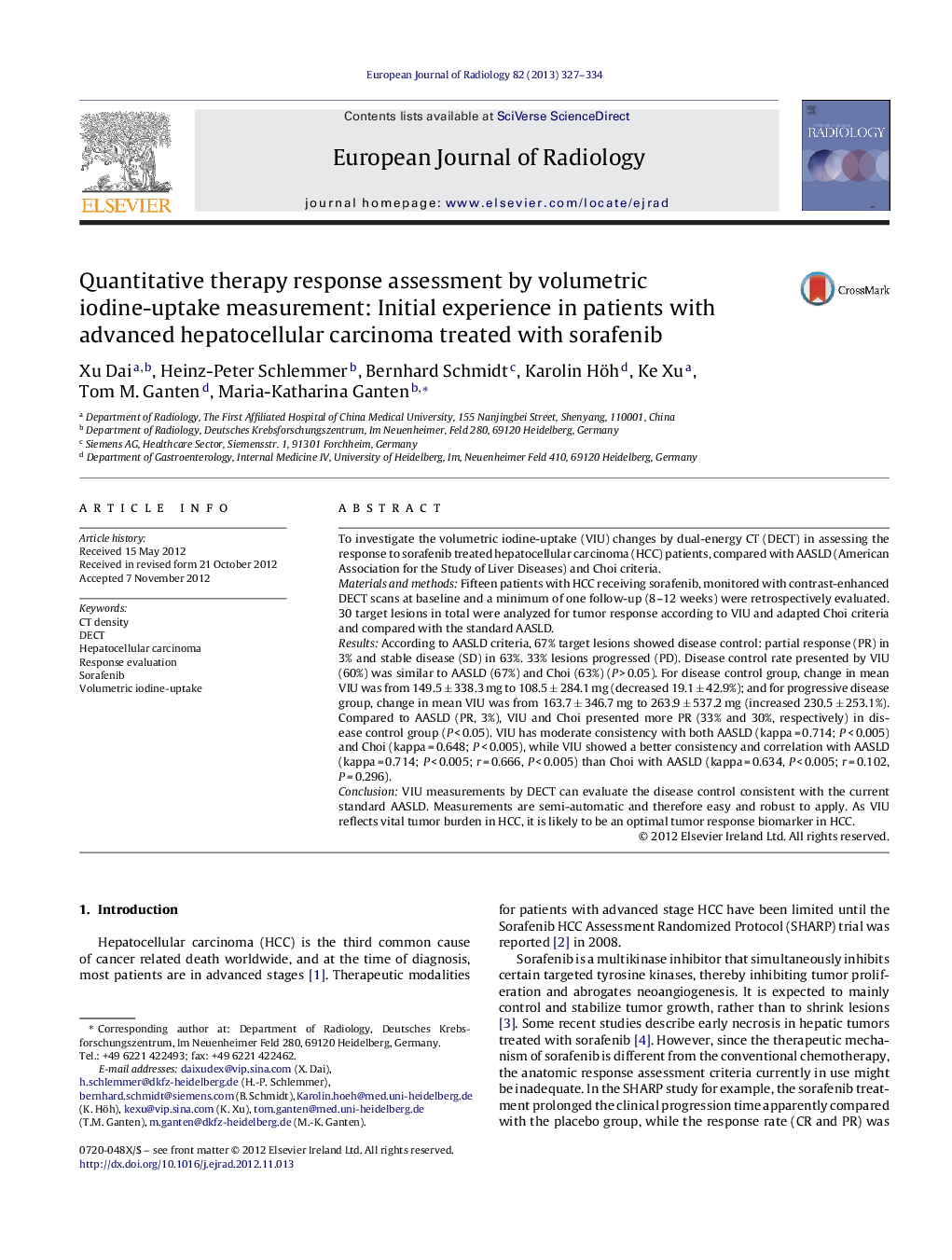| Article ID | Journal | Published Year | Pages | File Type |
|---|---|---|---|---|
| 4225550 | European Journal of Radiology | 2013 | 8 Pages |
ObjectivesTo investigate the volumetric iodine-uptake (VIU) changes by dual-energy CT (DECT) in assessing the response to sorafenib treated hepatocellular carcinoma (HCC) patients, compared with AASLD (American Association for the Study of Liver Diseases) and Choi criteria.Materials and methodsFifteen patients with HCC receiving sorafenib, monitored with contrast-enhanced DECT scans at baseline and a minimum of one follow-up (8–12 weeks) were retrospectively evaluated. 30 target lesions in total were analyzed for tumor response according to VIU and adapted Choi criteria and compared with the standard AASLD.ResultsAccording to AASLD criteria, 67% target lesions showed disease control: partial response (PR) in 3% and stable disease (SD) in 63%. 33% lesions progressed (PD). Disease control rate presented by VIU (60%) was similar to AASLD (67%) and Choi (63%) (P > 0.05). For disease control group, change in mean VIU was from 149.5 ± 338.3 mg to 108.5 ± 284.1 mg (decreased 19.1 ± 42.9%); and for progressive disease group, change in mean VIU was from 163.7 ± 346.7 mg to 263.9 ± 537.2 mg (increased 230.5 ± 253.1%). Compared to AASLD (PR, 3%), VIU and Choi presented more PR (33% and 30%, respectively) in disease control group (P < 0.05). VIU has moderate consistency with both AASLD (kappa = 0.714; P < 0.005) and Choi (kappa = 0.648; P < 0.005), while VIU showed a better consistency and correlation with AASLD (kappa = 0.714; P < 0.005; r = 0.666, P < 0.005) than Choi with AASLD (kappa = 0.634, P < 0.005; r = 0.102, P = 0.296).ConclusionVIU measurements by DECT can evaluate the disease control consistent with the current standard AASLD. Measurements are semi-automatic and therefore easy and robust to apply. As VIU reflects vital tumor burden in HCC, it is likely to be an optimal tumor response biomarker in HCC.
